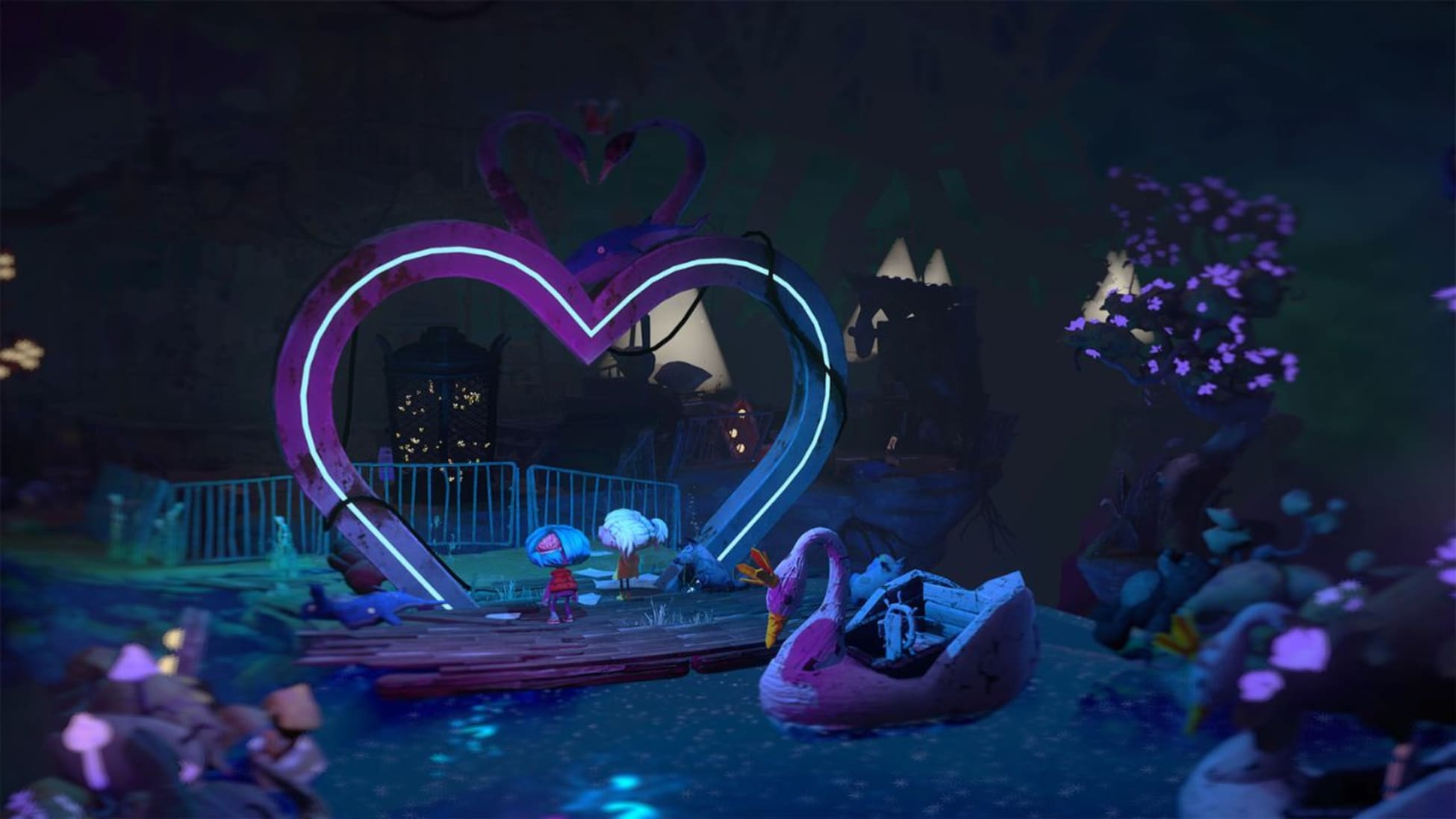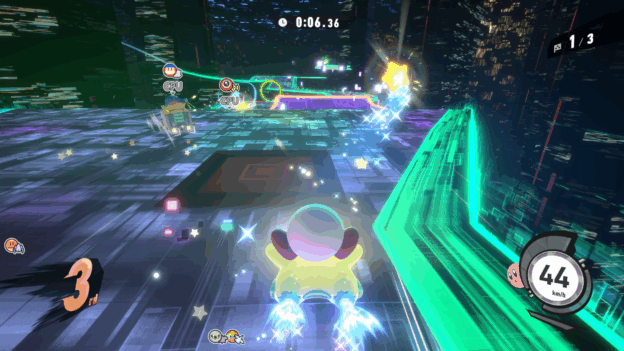Reynatis Review – Review – Nintendo World Report

I’ve always wanted to visit Shibuya, but maybe with a better framerate.
Shibuya buzzes with so much energy and life that it feels almost electric—some might even say magical. Developed by FuRyu and NatsumeAtari, and published by NIS America, brand new action-RPG Reynatis attempts to bring a version of Shibuya to life where magic is real, dangerous, and oppressed through force. This new title will be “liberated” on September 27th for the Nintendo Switch, but should it have been “suppressed” a little longer?
In the world of Reynatis, wizards are people awakened to their magical abilities after a close brush with death. Upon receiving their involuntary gifts, wizards are left with little choice but to conceal their abilities to maintain their previous lives. Brandishing your powers will get you in trouble with the M.E.A. (Magical Enforcement Administration), an organization that serves to protect the general non-magical public—who fear those with magical abilities—while also combating the Rubrum drug epidemic.
Rubrum, a highly addictive drug supplied by The Guild (more on them later), is tearing apart the streets of Shibuya. This drug grants temporary magical abilities to users, and in some cases, it may unlock their potential as future wizards. However, more often than not, it twists users into unrecognizable monsters that wreak havoc on Tokyo.
Reynatis follows the story of two main protagonists: Marin Kirizumi and Sari Nishijima. Marin is a 19-year-old wizard on the fringes of society. He’s been a wizard since he was 14 and yearns to end his oppression by becoming the strongest wizard of them all. Led by his father’s parting words, he comes to Shibuya to pursue his goal. Sari, on the other hand, is a member of the M.E.A., often treated as their poster girl, with her face regularly featured in recruitment ads. Her goal is the eradication of Rubrum. The story alternates between these characters and their allies, offering multiple perspectives and a rich understanding of the world. Written by Kazushige Nojima of Final Fantasy series fame, the story is one of the clear highlights of Reynatis.

Gameplay and story are uniquely interwoven. When wandering the streets of Shibuya or engaging in combat, pressing the L button switches your wizard between “Suppressed” and “Liberated” states. In the Suppressed state, you conceal your magic, allowing you to walk freely and interact with the general public. In the Liberated state, however, you can see hidden items you wouldn’t otherwise be able to but people will cower in fear and post your location on social media. As you trend and eventually reach the number one spot, the M.E.A. descends on you with their top agents, triggering a fight that feels almost unwinnable. This system serves as a prolonged “Game Over,” as it’s impossible to avoid the fight, and escape isn’t an option. To prevent this, you must hide in specific zones marked with an eye. These hiding spots are often in plain sight and always conveniently placed where a fight or quest might end, making the system feel half-baked from a gameplay perspective. While it adds flavor and tension to the setting, it doesn’t offer much else.
Now, onto the main feature: the combat. As mentioned, the Suppressed and Liberated states also apply during battles. In the Liberated state, you’re in your fully magical form, with your clothing transformed and your hair glowing—a sight that would make Dumbledore envious. Y becomes your basic attack, while X and A are your magic spells, all of which drain your mana. Once your mana is depleted, you revert to the Suppressed state and must either wait for it to refill or absorb mana from enemies. To absorb mana, you’ll need to dodge attacks. When an attack is imminent, a circle appears around your character; holding the R button charges this circle. Release it at the right moment to steal mana from your enemy and negate damage. Fully charging your mana triggers an overcharged state, causing an explosion and slowing time, giving you a chance to deal extra damage. You can create a team of three characters, each with their own mana pool, and switch them in using the ZL and ZR buttons. This is useful if your active character is forced into the Suppressed state or if you want to build longer combo chains. Later in the game, you unlock ultimate abilities that use a diamond meter near your mana bar triggered by pressing in the L stick when the meter is full. These abilities are satisfying finishers, and each character has a unique ultimate, which became a key consideration when forming my team.
As you progress, you’ll meet more of the supporting cast, with a total of six playable characters, each with a distinct combat style. My personal favorite is Moa Fukamachi, who wields a giant umbrella hammer and can summon a swarm of smartphone-wielding bunnies during combat. At times, the supporting cast steals the spotlight, especially from Marin, who can be a bit one-dimensional. Nonetheless, watching the cast interact is always a joy.

Character progression is handled through standard level ups by completing combat scenarios and a heavy emphasis on reducing the overall ‘Malice level’ of Shibuya. Wizart is graffiti created by wizards that is imbued with their magic. Gazing upon this graffiti teaches you the hidden techniques left behind by their creator. They can be as mundane as “You receive more money” to brand new abilities you can plug into the Y and A slots of your wizards, making their discovery highly rewarding. The only catch is that to view them you need to reduce the malice meter to a certain threshold by completing side quests and improving the public’s view of wizards in Shibuya. The way these systems interact is somewhat strange, but it encourages you to take in your surroundings more carefully when roaming Tokyo.
Marin’s story involves opening fog gates (not quite the Fromsoft kind) that lead to a realm called Another. This dimension is home to the largely unexplored Dominus Forest, which contains large, ominous doors that promise a path to The Dominus, whom Marin believes can grant him power. The Guild also resides in Another, a group that lives outside society’s laws. They govern ‘The Legacies,’ ancient magicians under the command of Soku Makabe, whose goal is to restore human rights to wizards by toppling society and the M.E.A. through force and Rubrum distribution. Consequently, a significant portion of the game takes place outside Shibuya, which is for the best.
Shibuya’s streets are impressively recreated, with recognizable landmarks like the 109 department store and Shibuya Sakura Stage capturing the essence of the area. However, despite this accuracy, the overall geometry detail of the environments and characters is relatively low, making the game’s performance issues on the Switch even more puzzling. Frame drops are frequent in Shibuya, with the iconic Shibuya Crossing being the worst offender. While the game’s performance improves in indoor areas and Another, much of the exploration and side quests occur in Shibuya, where loading into new zones often causes noticeable lag. Completing quests can also trigger pauses of several seconds before a cutscene loads. Given the modest level of graphical detail, the game’s poor optimization on the Switch feels difficult to justify.

The camera becomes an issue as well, especially during combat. Characters like Sari, with her large, sweeping attacks, can cover great distances—fun in open areas but frustrating in tight spaces. In narrow hallways, I often found myself fighting blind, relying on audio cues to gauge my position. Other gameplay quirks also detract from the experience. Leaving a combat zone can cancel the fight, even with just one enemy remaining, and some abilities grant so much mobility that I accidentally ran away from encounters. Revisiting explored areas in Another doesn’t reveal more of the map, forcing reliance on a small, hard-to-read minimap for navigation, and when quest markers vaguely point towards your goal in these zones, it becomes unnecessarily irksome. I also experienced multiple crashes—once while quickly navigating the pause menu and using photo mode, and more frequently when advancing to the next stage of the story. Fortunately, the autosave system prevented any major loss of progress.
The lack of a fast travel system also adds to the frustration. While wandering the streets of Shibuya is initially enjoyable, the game starts to feel tedious when you have to trek through the same areas repeatedly for side quests.
Reynatis is ultimately a frustrating experience. I adore many of its characters and concepts, and when the combat works, it’s incredibly fun. But when it doesn’t, it’s maddening. The boss battles can be particularly aggravating, with some enemies relying on stun-locking attacks, which wouldn’t be as much of an issue if not for the game’s poor performance. I wish the game had been given another year of development, as it’s releasing with squandered potential. I truly hope future patches address some of these issues, as I’d love to return to the game with renewed enthusiasm, especially with the upcoming DLC collaboration with The World Ends With You. If the game’s core concepts interest you and you can look past the performance issues, it’s worth checking out. Just play it on another console or PC, where these problems will hopefully be less prevalent.




